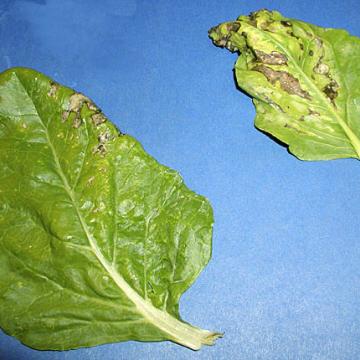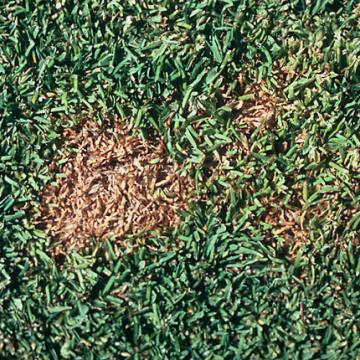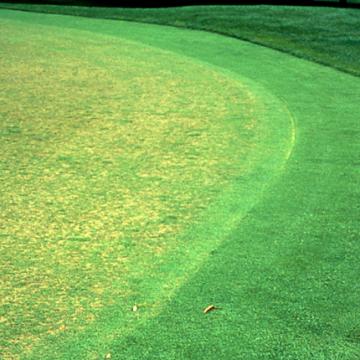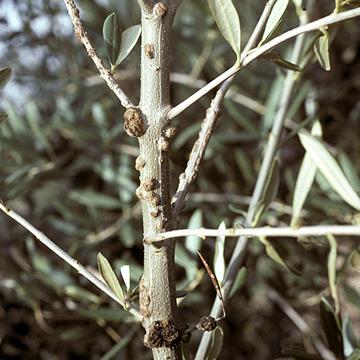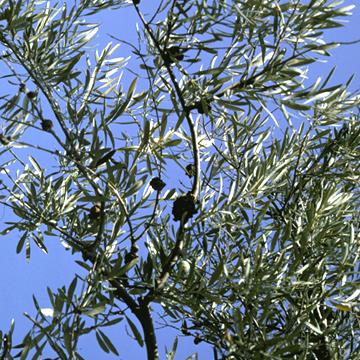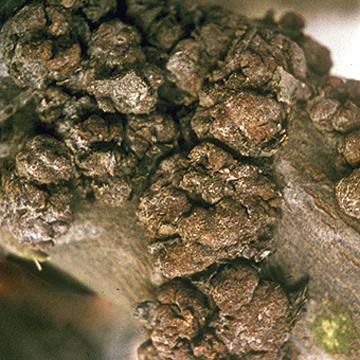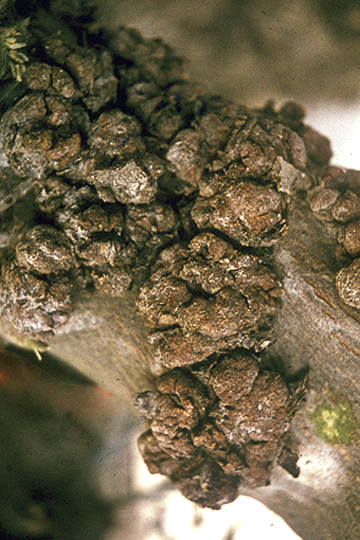DISEASE: Bacterial leaf spot of chard
HOST: Chard
Chard leaves with necrotic spots.

Bacterial leaf spot of chard | Chard
DISEASE: Bacterial leaf spot of chard
HOST: Chard (Beta vulgaris subsp. cicla)
PATHOGEN: Pseudomonas syringae pv. aptata
PATHOGEN SYNONYM: Pseudomonas aptata
SOURCE: P. Brown
DISEASE: Bacterial leaf spot of chard
HOST: Chard
Chard with necrotic, irregular leaf spots.

Bacterial leaf spot of chard | Chard
DISEASE: Bacterial leaf spot of chard
HOST: Chard (Beta vulgaris subsp. cicla)
PATHOGEN: Pseudomonas syringae pv. aptata
PATHOGEN SYNONYM: Pseudomonas aptata
SOURCE: P. Brown
DISEASE: Bacterial wilt
HOST: Grass
Initial symptom is a lime-green, yellow, or blue-green appearance of the grass. The next symptom is small, reddish brown spots on leaf blades.
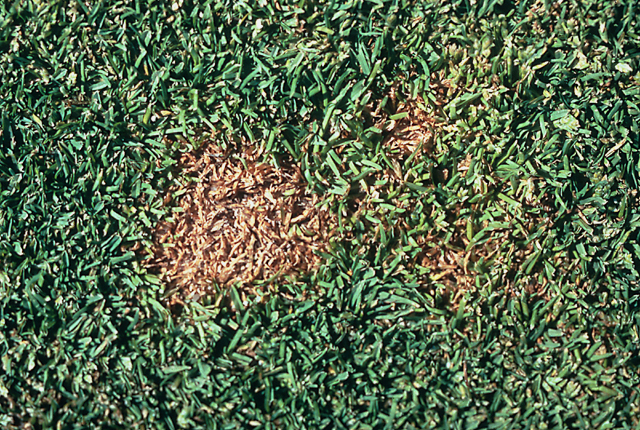
Bacterial wilt | Grass
DISEASE: Bacterial wilt
HOST: Grass (Poa annua)
PATHOGEN: Xanthomonas translucens pv. poae
SOURCE: P. H. Dernoeden
DISEASE: Bacterial wilt
HOST: Grass
Infected turf grass with patches of yellowing, wilted, and dead grass.
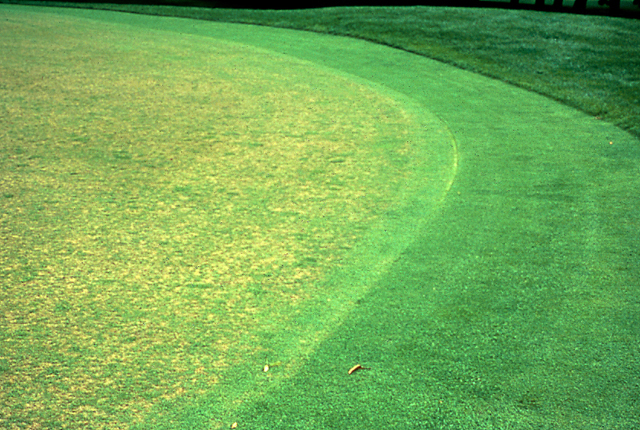
Bacterial wilt | Grass
DISEASE: Bacterial wilt
HOST: Grass (Poa annua)
PATHOGEN: Xanthomonas translucens pv. poae
SOURCE: APS
DISEASE: Bacterial wilt
HOST: Grass
Late stage of disease development. Dead grass has a light brown or bleached tan appearance.
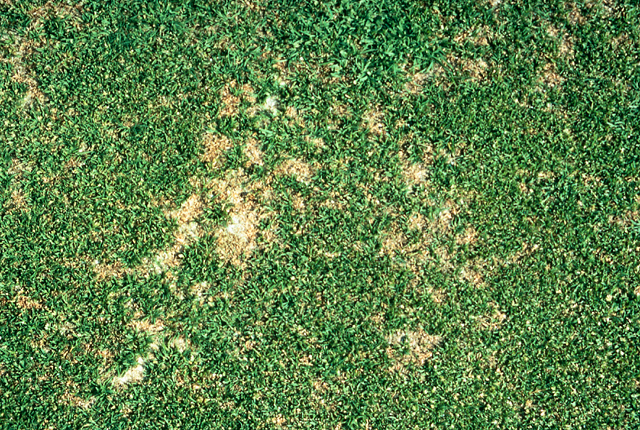
Bacterial wilt | Grass
DISEASE: Bacterial wilt
HOST: Grass (Poa annua)
PATHOGEN: Xanthomonas translucens pv. poae
SOURCE: P. H. Dernoeden
DISEASE: Olive knot
HOST: Olive
Multiple infections of young stems. The bacterium invades vascular tissues during certain times of the year and may be isolated from branches that appear healthy.
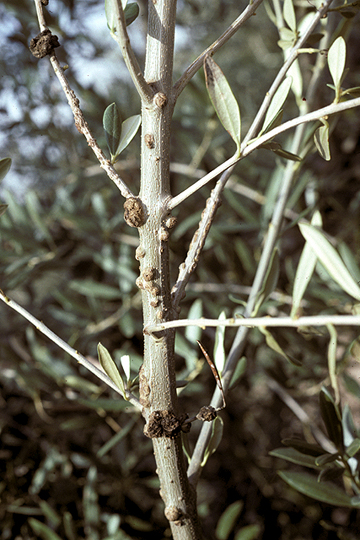
Olive knot | Olive
DISEASE: Olive knot
HOST: Olive (Olea europaea)
PATHOGEN: Pseudomonas savastanoi pv. savastanoi
SOURCE: M. Schroth
DISEASE: Olive knot
HOST: Olive
Tree with knots/galls on branches along with twig dieback, which is associated with knots. Fusarium and Diplodia spp. infect through knots and are thought to be main reason for dieback.
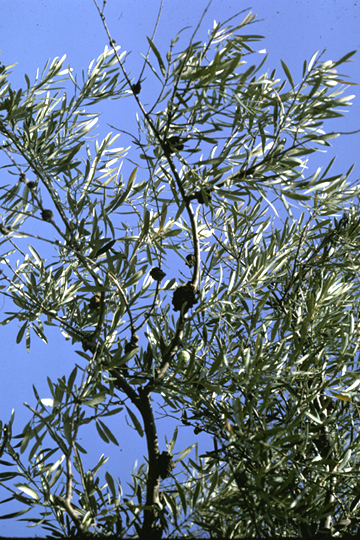
Olive knot | Olive
DISEASE: Olive knot
HOST: Olive (Olea europaea)
PATHOGEN: Pseudomonas savastanoi pv. savastanoi
SOURCE: M. Schroth


